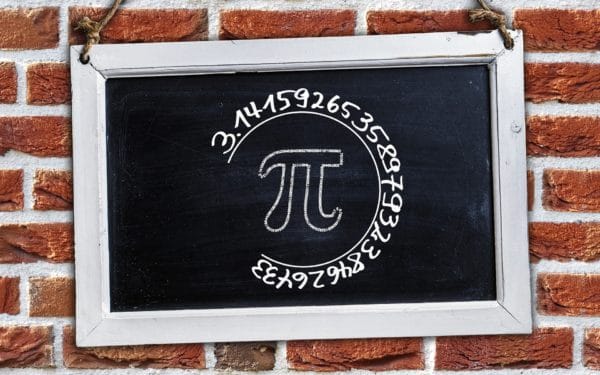Any math teacher, and probably any math student, can tell you about the fascination and frustration of Pi. This Greek letter has come to represent the equation for measuring the area of a circle. While the circle is among the most basic shapes that we know of, the constant that’s used for measuring it (the ratio of circumference to diameter) expresses as an irrational number: 3.14159… with a non-repeating decimal pattern that stretches out infinitely. This curious mix of the basic and the ineffable is the reason why we celebrate Pi Day.
While the Babylonians and Egyptians first calculated the concept of Pi almost 4000 years ago, and while philologist William Jones assigned its current name in the early 18th century (easier than calling it Archimedes’ Constant), Pi Day is a more recent creation. Physicist and tinkerer Larry Shaw came up with the idea in 1988 as a fun activity for San Francisco’s Exploratorium, a hands-on science education museum. Since Pi’s first three digits are 3.14, he reasoned, why not celebrate this unusual number on March 14? Thus began a tradition of parades, pies, and a birthday party for math uber-geek Albert Einstein, who was fortuitously born March 14, 1879. What seemed at first like an only in San Francisco event grew to capture the attention of math and science educators everywhere. By 2009, in fact, Pi Day became an official national holiday in the U.S.

Image by Gerd Altmann from Pixabay
Learning and Playing With Pi
At Inspired Teaching, we champion inquiry and imagination through hands-on investigations that encourage students to wonder, experiment, and learn. The kinds of activities that take place on Pi Day are often a perfect example of these things. Here are some resources for bringing the fascinating mysteries of Pi into your classroom.
Let’s begin with an idea from Inspired Teaching alumnus Scott Colman. While his fourth graders are “still several fairly large conceptual steps away from meaningfully understanding what Pi is,” here’s what he hopes to do someday when circumstances permit:
“I’d celebrate Pi Day with wheel art. The lesson would begin with a read-aloud or movie clip involving Archimedes. After this, students would trace a wheel on chart paper. They’d draw a diameter on the wheel’s traced circle (this would require careful instructions and attention), measuring and labeling the line. Then they would cover the outside of the wheel in a coat of paint and roll the wheel one full rotation to create a straight line of paint next to the traced circle, which they’d also measure and label. They’d do this twice: once with a wheel of any size, and once with a wheel of 1-unit diameter (e.g. one foot). They would then compare the relationship/ratios between the two respective diameters and circumferences. Using these products, students would create a poem, story, or drawing about Pi on the chart paper in connection with the introductory material about Archimedes.”
As you might expect, Pi Day has its own website where you can learn about the math itself, the history and philosophy of the Greek letter that symbolizes it, and an array of games, resources, and grade-level activities. Get started by downloading the PDF on their homepage for a taste of what this site has to offer.
Don’t miss the Exploratorium’s wonderful Pi Day page. Here you’ll find links to activities, a loving tribute to Pi Day’s founding father, video of the parade, and an online glimpse of Pi-related museum exhibits if you’re unable to visit San Francisco on March 14.
Over the past few years, Edutopia has given us a wealth of resources about ways to have fun on Pi Day:
• Matt Davis’ resource roundup covers the topic with links ranging from Scientific American and PBS to CNN and the New York Times. And musicians will appreciate Michael Blake’s video What Pi Sounds Like.
• Alex and Noelle Filippenko suggest some memory and measurement games, and while their piZone site appears to be currently unavailable, you can still find their Pi Song video on YouTube.
• The real payoff here is a collection of 22 short videos spread over three of Amy Erin Borovoy’s 5-Minute Film Festival blogs: Celebrate Pi Day!, Hooray for Pi Day, and 10 Great Video Resources for Teaching Math. We applaud the brilliance of educators who leverage the medium of video so creatively.
Oh, and another reason why Inspired Teaching is so excited about Pi? Well, it’s right there in our name! Happy Pi Day, everyone!

